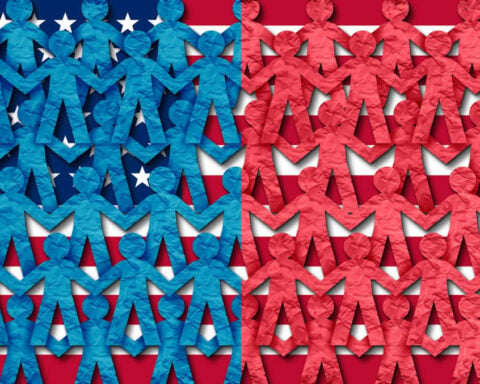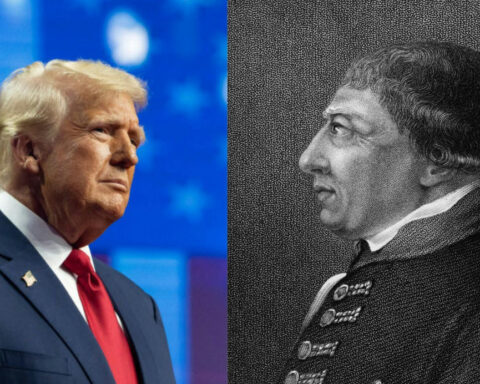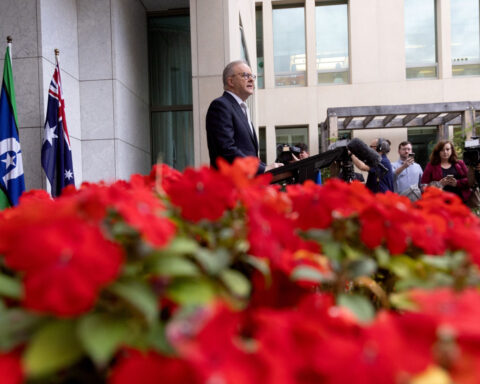The ability to divorce regardless of what the other party wants is the essence of no-fault divorce. I think it’s alarming that it’s under attack. Nevertheless, the idea that not being in love is a valid reason to divorce is an assumption that should be questioned. It’s based on the idea that love is the purpose of marriage, and that itself is debatable.
What’s marriage for, anyway?
Marriage is a legal status that confers important rights and benefits on the married, and these rights and benefits have nothing to do with love. In fact, the purpose of these advantages is to give couples non-love reasons to marry. The idea is that the social benefits of marriage are so significant that incentivizing marriage, or even flat-out paying people to marry, is justified.
For an example of this kind of cost-benefit analysis, consider the policy debate over whether children are better off being raised by two married parents. In her recent book “The Two-Parent Privilege: How Americans Stopped Getting Married and started Falling Behind,” economics professor Melissa Kearney argues that this advantage is significant and wide-ranging. Not surprisingly, Kearney’s work was eagerly embraced by pro-marriage advocates and has reinvigorated long-standing discussions about how to further encourage marriage.
If children do better when raised by married parents, it’s understandable that the government would enact laws and policies to promote marriage. It also explains why the government might seek to limit divorce. This is a purely instrumental view of marriage, and one that would have been very familiar to 18th- and 19th-century Americans.
For most of U.S. history, marriage was unabashedly transactional. Laws essentially guaranteed that most men and women would wed; love had nothing to do with it.
Striking a ‘marital bargain’
Historians refer to marrying for legal and economic benefits as the “marital bargain.” However, in the late 19th century, acceptance of the transactional nature of the marital bargain began to wane, and publicly, men and women began to declare that love was the purpose of marriage. As historian Nancy Cott writes in her book “Public Vows,” by the turn of the 20th century, American culture had “put love and money on opposite sides of the street.”
My book, “You’ll Do: A History of Marrying for Reasons Other than Love,” also explores this history and shows how Americans went from encouraging the marital bargain to viewing it as harmful, both to couples and to the institution of marriage as a whole.
Despite the public view that love is the only reason to marry, the law takes a more practical approach, recognizing that love alone may not be enough to get couples to the altar. That’s why it continues to encourage marriage for instrumental reasons, with benefits ranging from tax breaks and immigration preferences to criminal law defenses.
When marriage was a clear bargain for exchange, the benefits of the union were obvious. Like the 19th-century marital advertisement “Man with farm seeks woman with tractor,” each side knew exactly what they were getting. Now, the purpose of marriage is less clear. I believe the move to eliminate no-fault divorce is simply the latest symptom of this confusion regarding the goals of marriage.
If marriage is about love, then a lack of love should be the quintessential reason to divorce. However, if marriage is a contract for benefits, then it isn’t surprising that Crowder and other no-fault critics are outraged that it can be unilaterally broken. Although the push to eliminate no-fault divorce is presented as a fight over the purpose of divorce, it’s really a fight over the meaning of marriage.
Marcia Zug does not work for, consult, own shares in or receive funding from any company or organization that would benefit from this article, and has disclosed no relevant affiliations beyond their academic appointment.
Source: The Conversation

 Trump has begun another trade war. Here's a timeline of how we got here
Trump has begun another trade war. Here's a timeline of how we got here
 Canada's leader laments lost friendship with US in town that sheltered stranded Americans after 9/11
Canada's leader laments lost friendship with US in town that sheltered stranded Americans after 9/11
 Chinese EV giant BYD's fourth-quarter profit leaps 73%
Chinese EV giant BYD's fourth-quarter profit leaps 73%
 You're an American in another land? Prepare to talk about the why and how of Trump 2.0
You're an American in another land? Prepare to talk about the why and how of Trump 2.0
 Chalk talk: Star power, top teams and No. 5 seeds headline the women's March Madness Sweet 16
Chalk talk: Star power, top teams and No. 5 seeds headline the women's March Madness Sweet 16
 Purdue returns to Sweet 16 with 76-62 win over McNeese in March Madness
Purdue returns to Sweet 16 with 76-62 win over McNeese in March Madness







